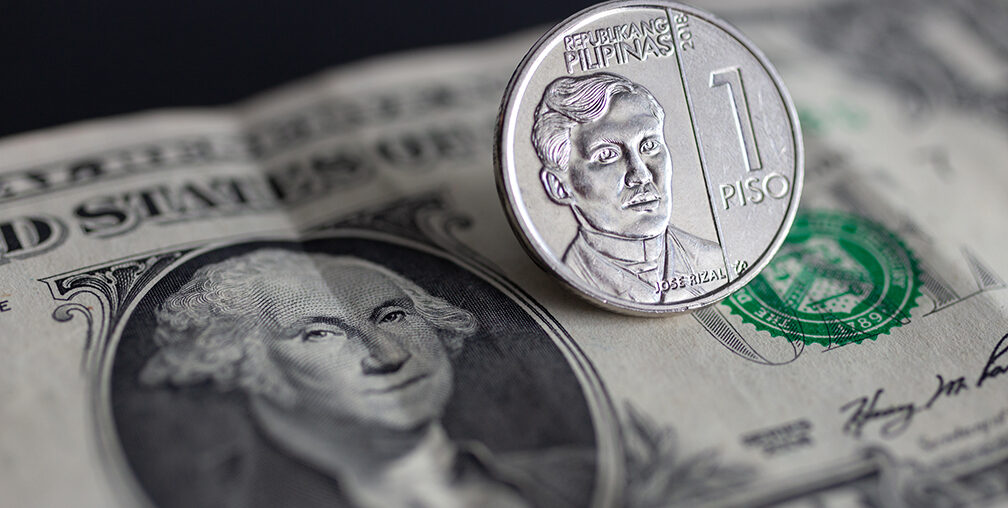FILIPINOS should brace for higher commodity prices in the coming months if the depreciation of the Philippine peso continues against the United States dollar, according to local economists.
On Thursday, the Philippine peso closed at P59 to the greenback. The last time the peso weakened to this level was on October 17, 2022.
The peso opened at P58.93 to the US dollar. The intra-day high was at P59 while the low was at P58.92 to the greenback.
“The issue here is imported food, especially with the impact of the typhoon. But most likely (we will see the impact) next year because Christmas goods (have been prepositioned),” Alvin P. Ang, an economist in a regional think tank, told BusinessMirror on Thursday.
Ang expects the peso to hover around P58 to the dollar but the “psychological barrier” would still be P60 to the greenback.
Jonathan Ravelas, senior adviser at professional services firm Reyes Tacandong & Co., agreed and said the weaker peso will lead to higher commodity prices mainly because he expects the peso to hit P60 in the next one to three months.
This will likely be the case if the Monetary Board decides to cut rates by 50 basis points (bps). Ravelas said, however, that cutting rates may be “necessary” given the uncertainties created by a Trump presidency.
“(We need to) stabilize growth and (there is) no harm to do a 50-bps cut except a weaker Philippine peso. Good for spending, good for banks’ balance sheet and tourism,” Ravelas said.
Meanwhile, Ateneo de Manila University economist Leonardon Lanzona Jr. said the weak peso will benefit Overseas Filipino workers (OFWs), business process outsourcing (BPO) firms, and select exports.
However, Lanzona said importers could suffer and lead to higher commodity prices. The “knee-jerk reaction” is for the BSP to “defend the peso by supplying more dollars in the market.”
He said, this is not advisable as this is not sustainable since part of the country’s debts will become more expensive due to the depreciation.
“Another option is to raise interest rates once again to bring down inflationary expectations and limit the government’s debt,” Lanzona told the BusinessMirror.
“I would (also) encourage more exports and trade in services to defend our currency. With the remittances in the Christmas season, a rise in trade in both goods and services will bring back the value of the peso,” he added.
This week, Bangko Sentral ng Pilipinas (BSP) Governor Eli M. Remolona Jr. confirmed that the BSP has been intervening in the foreign exchange market. But these interventions are limited to “small amounts,” just enough to prevent a sharp depreciation of the currency.
It may be noted that since the Philippines is a net food and oil importer, a sharp depreciation, or high exchange rate volatility, could become inflationary.
“No, we don’t worry so much about whether the peso depreciates or appreciates. We worry about the pass-through effect. But for now, medyo okay pa naman,” Remolona, however, said.
Bloomberg’s gauge of the currency fell for a third day on Tuesday after rising to a two-year high last week. Momentum indicators are signaling further upside may be limited in the short-term. Investor flow has become less one-sided, according to traders, and views about the currency’s direction are starting to become more circumspect (See: https://businessmirror.com.ph/2024/11/21/phl-peso-falls-to-25-month-low-against-the-greenback/).

